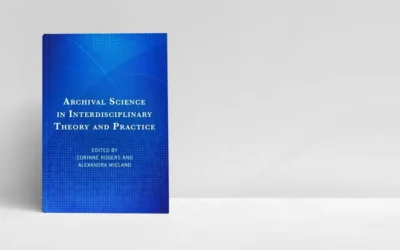Formulating an Archival Mission Statement
Margot Note
To identify the goals and needs of the archives effectively, archivists need to write mission statements for their repositories. A mission statement outlines the responsibilities of the archivist and the authority of the archives to pursue its goals.
It should address the purpose of the archives, the legal authority of an archives to fulfill its purpose, the primary and secondary needs the archives should meet, and the administrative placement of the archives within in the organization. The archives’ mission statement should mirror its organization’s mission statement so that it remains aligned with critical business objectives. A good mission statement balances the practical with the inspirational as well. It expresses the values and a vision that the organization takes pride in.
Unfortunately, the importance of creating a mission statement is often misunderstood due to many poorly written, vague, or ineffective statements. However, mission statements, when written correctly, can provide a clear direction for internal decision-making.
Use Plain Language
A mission statement is usually brief, no longer than a few paragraphs. It should be written clearly using the language that constituents use without professional jargon. Avoiding complex language makes the statement more straightforward to users.
Mission statements can also inform researchers and resource allocators about archival work. During difficult economic times, archivists need to succinctly communicate with their mission statements why their repository’s work is important and deserves investment. Mission statements articulate the value of repositories the same way that elevator pitches convey the value of individual archivists.
Aids in Decision-Making
Archivists need to be able to articulate and justify the mission statement amid changing circumstances. The statement sets the boundaries for an archives, positioning it as memorable and unique. Think about the one thing you want your repository to be known for in the world. More importantly, what is the message that already resonates with your donors and users? A mission statement should reflect the goals of the organization, not just the archives. It also helps prevent misunderstandings among archives staff, administrators, and users. The statement serves as an effective tool for offering directions and making decisions.
Most importantly, a mission statement aids in creating an acquisition mandate that outlines the parameters of what an archives will collect. It should state how the institution’s work differs from other institutions. The directive acts as a guiding principle in the archives’ acquisition-related business. Acquisition is a deliberate decision-making practice, because expensive, laborious activities, such as processing, storage, preservation, and access, center on it. A mission statement can also point to collection development needs to be fulfilled through fieldwork. A mission statement provides a foundation upon which other policies can be created, and strategic choices can be made.
Elements to Include
Great mission statements have three pivotal elements: a cause, an action, and a result. While most mission statements are longer or more complicated than just these factors, these elements distill your repository’s work to its essence. The statement is not supposed to tell everything about your archives. Instead, it is supposed to get people interested in hearing more.
The statement includes a description of the nature, scope, and functions of the program. You may wish to include information on why the program was initiated and its relationship to the parent organization’s work and goals. In addition, the statement outlines what types of activities the program aims to document, what kinds of records it seeks to collect, and what research groups or interests it exists to serve and support.
Archival Advocacy
A strong mission statement serves as an effective tool for archival advocacy. The process of formulating the mission statement challenges archivists to transcend everyday concerns and reflect on their program’s purposes.
Margot Note
Margot Note, archivist, consultant, and author is a guest blogger for Lucidea, provider of ArchivEra, archival collections management software for today’s challenges and tomorrow’s opportunities. Read more of Margot’s posts here, or download her previous books for Lucidea Press, The Digital Decisive Moment: Transformative Digitization Practices, Demystifying Archival Projects: Five Essentials for Success, The Archivists’ Advantage: Choosing the Right Collections Management System, or Digital Preservation without Tears.
Similar Posts
Ensuring Long-Term Access to Digital Archives
Long-term preservation is essential to ensure digital archives remain accessible and usable.
5 Best Practices for Personal Digital Archiving
Archivists have developed best practices for organizing and maintaining personal digital archives, safeguarding digital legacies for future generations.
Interview with the Editors: Wieland and Rogers on Interdisciplinary Archival Science
Alexandra Wieland and Corinne Rogers co-edited Archival Science in Interdisciplinary Theory and Practice. My interview with them is below.
The Importance of Personal Digital Archiving (Plus Steps to Get Started)
Archivists often help individuals manage and preserve digital files of personal significance.




Leave a Comment
Comments are reviewed and must adhere to our comments policy.
0 Comments